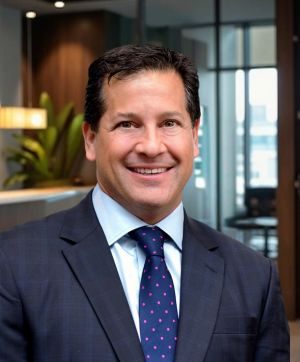Privately-Backed Large-Scale Renewable Energy Developers: Where Did All the Liquidity Go?
Originally Written January 2025
Over the course of the last 18 months, the valuations around renewable power and energy transition development platforms as well as assets have rapidly cooled. At the core of the current market, after more than twenty years of developers moving from pure development scope to a vertically integrated IPP model, we have to ask ourselves what the future will be for the industry-leading platforms that have completed the journey to significant scale. For the most part, flagship infrastructure, pension and sovereign wealth managers have already chosen their horses. This leaves a growing vacuum for new entrants and an outright difficult market for platforms that are mature and looking to exit or transition.
Let’s consider the universe of large-scale renewable developers focused on the core wind solar, or battery markets, and limit the scope to those that have valuations that exceed $1 billion. Excluding the European strategics like EDPR, Engie, EDF, RWE, Enel, etc., the significant remainder are privately-owned by infrastructure funds, pension funds, and in some cases, sovereign wealth funds. For a host of reasons, not all of which are driven by pressure from LPs to return capital, these investors are in the position of needing to at least evaluate exiting these investments over the next five years. While we can argue that pension funds or insurance companies are the best to own these companies on a long-term basis, there are often reasons why they need to sell. For example, certain long-duration investors still face sector or category-level overconcentration risk.
All that is left is the public markets – and potentially – a severely limited few evergreen funds. The equity markets continue to look favorably upon both renewable and conventional power generation through the lens of data center growth and AI. However, an IPO is both a partial and sequential liquidity mechanism. Accordingly, IPOs may be less than an ideal tool for an institutional private fund seeking to substantially exit a position. Using the public markets to get liquidity for investments is typically very limited due to the constraints of how much stock can be sold in a secondary transaction to the public, typically no more than 10% – 20% of the company.
Taking all of this into consideration serves to explain the sparseness of current private investor appetite for equity capital and is an inextricable factor underpinning the proliferation of private credit funds. Those managers have raised incremental billions almost overnight to fill the gap – effectively providing a synthetic secondary market to trapped investors in these scaled platforms. The prevailing economics associated with that type of capital are self-evidentiary of how stuck folks are at the larger scale.
As it stands today, developer/IPPs have two choices. 1 – Sell assets one off or in groups, which shrinks the very scale that predicated the original investment thesis (and generally isn’t a terribly attractive scenario to entertain in the current market). Or 2 – Bear the brunt of providing a new capital provider the asymmetric blend of debt like protection with equity like returns, the relative unattractiveness of which is self-explanatory.
So – Is there any other alternative to consider when you’ve invested nine or even ten figures of capital into a renewables developer and now want to liquidate your position?
There is always the concept of reverting to the European model of utilizing asset rotations into lower cost of capital vehicles to pare-down their equity exposure and recycle capital, which is demonstrably effective in maintaining control of assets and operations while juicing overall asset yield. It also serves to provide investors with access to and control of self-developed pipelines to sustain dividend growth.
However, the US market hasn’t historically had access to the cost of capital benchmarks that exist in Europe. The early 2010’s US YieldCo boom that analogized portfolios of renewable power assets to midstream infrastructure or REITs proved to have some fatal flaws, largely centered around investor expectations of cash flow dependability and misunderstood exposure to interest rate risk.
My view is twofold. There is growing structural demand from European investors to secure beachheads in the US market. This is evidenced at both the industry and regulatory levels – the US is experiencing an almost Cambrian-like explosion of digital infrastructure and AI growth that far outstrips the relatively muted pace of development in Europe. Those investors could unlock access to incrementally lower cost of capital and enable a version of the European renewables model outlined in the foregoing. Second, I believe that the public markets need to come back in at a sector-level, strategic scale, capitalizing jointly on the digital infrastructure theme as well as a clearly present consolidation opportunity within the ranks of privately-held large-scale developer/IPPs. There is an exciting opportunity to assemble mega- scale platforms with access to highly attractive cost of capital that are purpose-built to compete with the NextEra’s, AES’, and likely soon to be Calpine’s of the world, to name a few.
For an industry that has grown tremendously over the last two decades, mega-scale commercialization has clearly been achieved, but the path ahead still remains unclear. Over the course of the next few months, I plan on sharing more thoughts that will further expound upon the above and other challenges facing our industry. I would welcome dialogue with those either studying or facing similar challenges in the current market.

Written by Rob Sternthal, Managing Partner
For the last 20+ years, Rob has been a leading investment banking executive and recognized platform builder across the renewable power, energy, ESG and real assets sectors, advising on more than $25 billion of transactions.
Whether it be with regard to engaging an advisor, looking for a capital partner, or seeking out a thought partner as you contemplate the evolution of private investment in critical infrastructure, we would welcome the opportunity to connect with you.
Securities Products and Investment Banking Services are offered through BA Securities, LLC. Member FINRA SIPC. Expedition Infrastructure Partners (“XIP”), LLC and BA Securities, LLC are separate, unaffiliated entities.
© 2025 Expedition Infrastructure Partners, LLC. All Rights Reserved.

